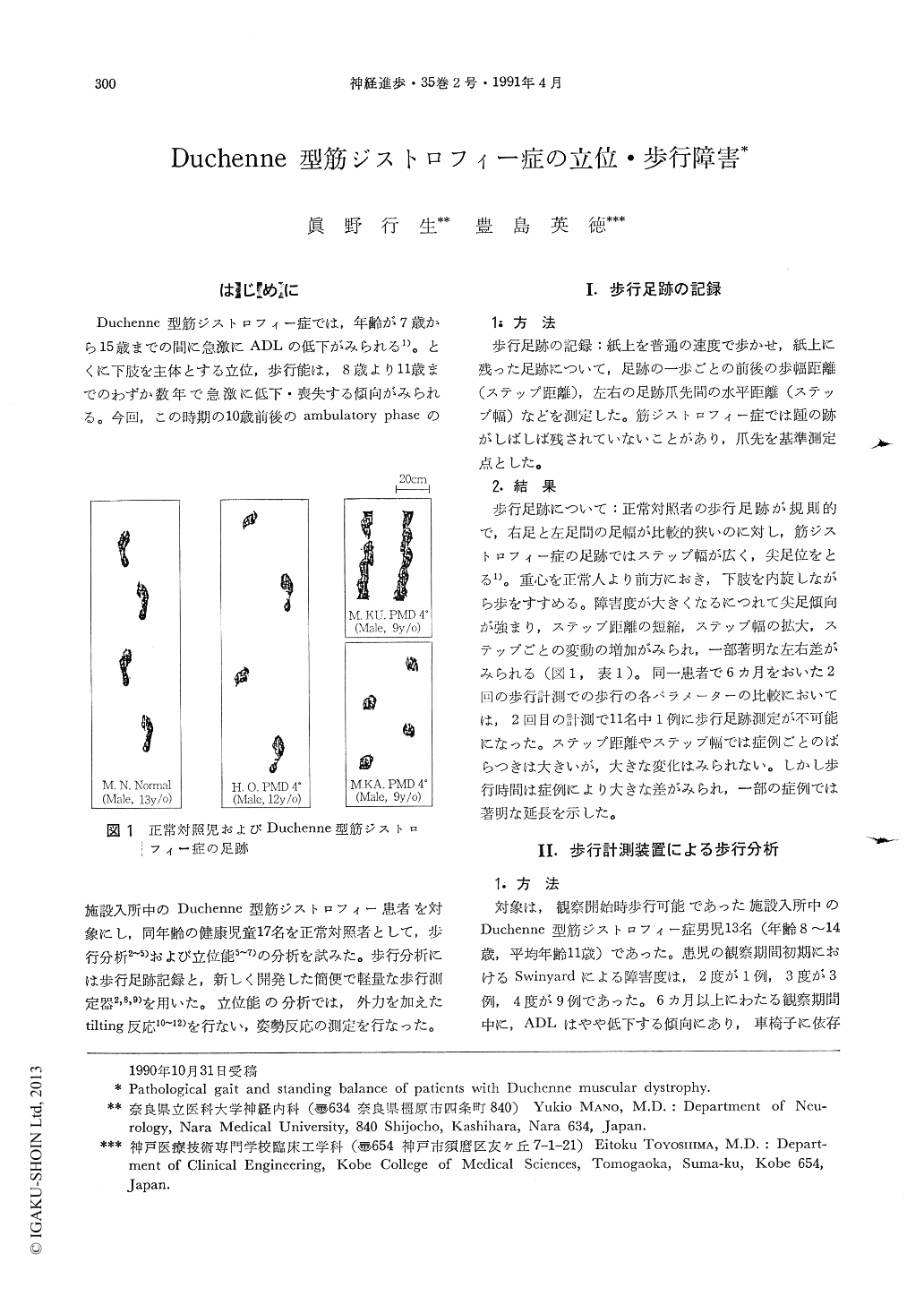Japanese
English
- 有料閲覧
- Abstract 文献概要
- 1ページ目 Look Inside
はじめに
Duchenne型筋ジストロフィー症では,年齢が7歳から15歳までの間に急激にADLの低下がみられる1)。とくに下肢を主体とする立位,歩行能は,8歳より11歳までのわずか数年で急激に低下・喪失する傾向がみられる。今回,この時期の10歳前後のambulatory phaseの施設入所中のDuchenne型筋ジストロフィー患者を対象にし,同年齢の健康児童17名を正常対照者として,歩行分析2~5)および立位能5~7)の分析を試みた。歩行分析には歩行足跡記録と,新しく開発した簡便で軽量な歩行測定器2,8,9)を用いた。立位能の分析では,外力を加えたtilting反応10~12)を行ない,姿勢反応の測定を行なった。
It is well-known that the activity of daily living (ADL) decreases progressively from 7 to 15 years of age in patients with Duchenne muscular dystrophy (DMD). The ADL scores related to the gait and standing balance become smaller in short term from 8 to 11 years of age in this disease. For assessment of clinico-pathophysiological aspects of this disease, the objective, quantitative, and serial measurements of abilities in patient's gait and standing balance are needed.
Thirteen hospitalized male patients with DMD, aged 7 to 15 years (mean of 10 years) were examined initially in the ambulatory phase: one patient in stage 2 of Swinyard's disability score, 3 patients in stage 3, and the remaining 9 patients in stage 4. During the 6 month of period of observation, the disease progressed so that one patient required braces for walking, and 5 became unable to walk due to increased muscle weakness in the lower limbs. The ADL of this patient group decreased gradually from 75.5±14.2 (46~94) to 69.5±16.7 (36~93) during this period. 17 normal children of similar age to patients with DMD were also examined as the control.

Copyright © 1991, Igaku-Shoin Ltd. All rights reserved.


